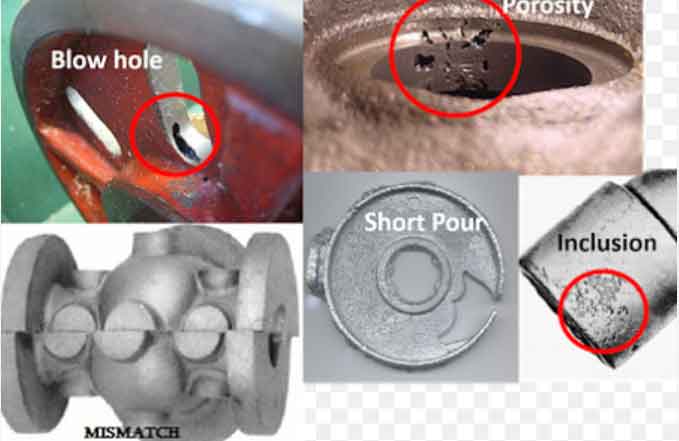
Metal casting is a complex manufacturing process used to produce a wide range of components. However, casting defects can compromise the quality and performance of the final product. Understanding and addressing these defects is essential for enhancing the quality of metal casting processes. This article aims to demystify casting defects by exploring their types, root causes, and strategies for enhancing quality.
Defect Types:
a) Surface Defects:
These defects affect the external appearance and finish of the casting, including surface roughness, pits, scale, and flash.
b) Internal Defects:
Internal defects occur within the casting, such as porosity, shrinkage, cracks, inclusions, and segregation.
c) Dimensional Defects:
Dimensional defects involve deviations from the desired shape, size, or geometry of the casting, including warpage, distortion, and inaccurate dimensions.
Root Causes:
a) Process-related Causes:
These include improper gating and riser design, inadequate mold filling, incorrect pouring temperature or speed, insufficient cooling, and inadequate venting.
b) Material-related Causes:
Material-related factors such as alloy selection, impurities in raw materials, improper melting and alloying techniques, and inadequate metal treatment can contribute to defects.
c) Design-related Causes:
Design flaws such as inadequate fillets, sharp corners, thin sections, improper wall thickness, and insufficient draft angles can lead to casting defects.
Strategies for Enhancing Quality:
a) Process Optimization:
- Implementing advanced simulation software to optimize mold design, gating system, and process parameters.
- Conducting thorough process analysis and optimization to minimize defects and improve yield.
- Utilizing quality control tools such as process monitoring, statistical process control, and inspection techniques.
b) Material Selection and Preparation:
- Using high-quality raw materials with minimal impurities.
- Employing proper melting techniques, including effective degassing and alloying methods.
- Ensuring the appropriate handling, storage, and preparation of materials to prevent contamination.
c) Mold Design and Preparation:
- Employing experienced mold designers to optimize gating and riser systems, minimize turbulence, and ensure proper venting.
- Employing suitable mold coatings, refractories, and release agents to enhance mold quality and reduce defects.
d) Process Control and Monitoring:
- Implementing strict process control measures, including temperature control, metal cleanliness, and solidification monitoring.
- Conducting regular inspections, including non-destructive testing, to identify defects early in the process.
- Maintaining comprehensive documentation and traceability throughout the casting process.
e) Continuous Improvement:
- Encouraging a culture of continuous improvement and promoting cross-functional collaboration among foundry personnel, engineers, and designers.
- Analyzing and learning from past defects to identify trends, implement corrective actions, and prevent recurrence.
Casting defects can significantly impact the quality and reliability of metal castings. By understanding the different defect types, identifying their root causes, and implementing strategies for quality enhancement, manufacturers can improve their metal casting processes. Process optimization, material selection and preparation, mold design and preparation, process control and monitoring, and a commitment to continuous improvement are key to achieving defect-free castings and enhancing overall quality in metal casting processes.
